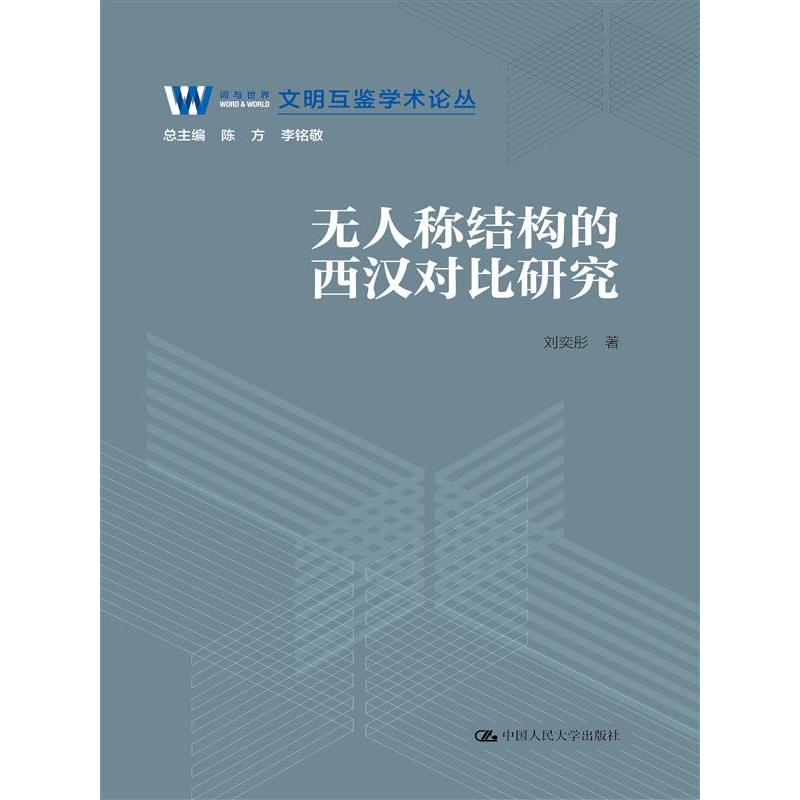
出版社: 中国人民大学
原售价: 88.00
折扣价: 61.60
折扣购买: 无人称结构的西汉对比研究(文明互鉴学术论丛)
ISBN: 9787300321097

刘奕彤,马德里康普顿斯大学语言学博士,现任中国人民大学外国语学院西班牙语系讲师。主要研究领域包括生成语言学、语料库语言学、二语教学,曾在国内外学术刊物上发表多篇论文。近年来主要教授《基础西班牙语》、《高级西班牙语》、《西班牙语语法》、《西班牙语阅读》等课程,主持中国人民大学科学研究基金项目一项。
Abstract
The objective of this doctoral thesis is to conduct comparative research in which we study two types of Spanish and Chinese sentences: sentences with predicates related to natural phenomena, and sentences with predicates related to existence, appearance and disappearance. In Chinese and Spanish, both of these sentence types have been analyzed as impersonal sentences and sentences without subjects. However, it has also been argued that these sentence types do have subjects, although said position is less widely accepted. Our interest in the properties of the subject has led us to research two types of prototypical
impersonal sentences.
Spanish and Chinese grammarians have proposed an important distinction in relation to the concept of subject levels. These levels include the following: 1) the formal syntactic level, 2) the cognitive semantic level, and 3) the informative level. Our comparative research demonstrates that despite apparent differences –differences which include a lack of suffixes, concordance and other types of markers in Chinese– there are also many points of conceptual convergence. These points of convergence include, for example, the lexical category of subjects, which are usually substantive; and transitive and intransitive verbs usually have deep subjects. When the subject appears before the verb, the subject is usually determinate.
This study also examines how unaccusative verbs have deep objects, are usually indeterminate, and may have postponed subjects. In addition, subjects can be omitted in both Spanish and Chinese. There are null subjects in both languages. It can also be argued that in Spanish topics and grammatical subjects are more clearly distinguished than in Chinese and that said distinction is based on syntactic diagnoses. Conversely, because of a lack of formal markers in Chinese, there are more discrepancies regarding differentiation. We argue that Spanish and Chinese share more similarities at a cognitive semantic level given that cognition is common to all human beings.
During our investigation, we study two types of sentences which have traditionally been analyzed as pseudo–impersonal or impersonal sentences. Said sentences include those with predicates of natural phenomena and sentences with predicates of existence, appearance and disappearance. In both Spanish and Chinese, these sentences can be divided into three parts: a preverbal part A that may be locative or temporary, a verbal part B, and a postverbal part C that can include nouns and adjectives.